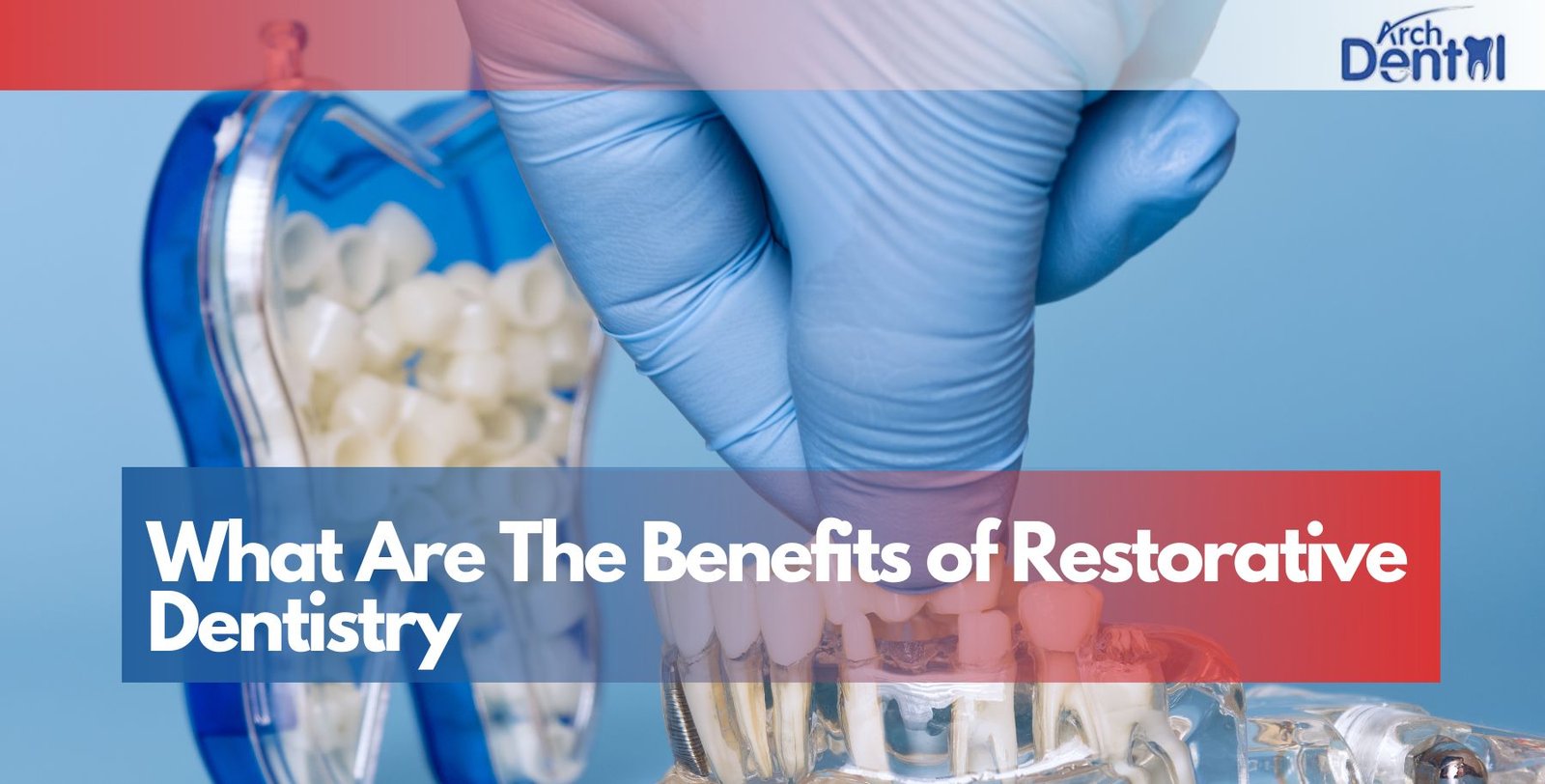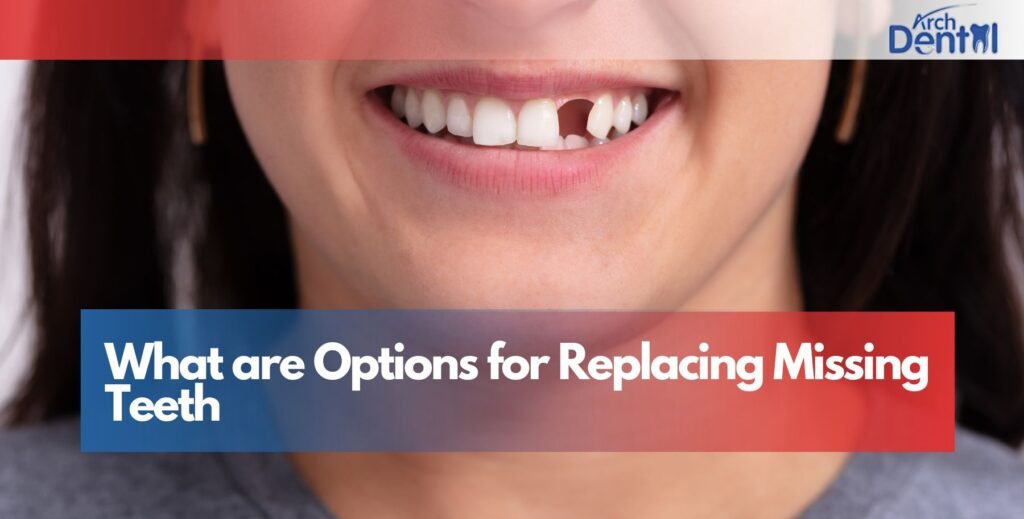A healthy smile impacts everything how you speak, how you eat, and how confidently you interact with others. When dental problems appear, restorative dentistry helps rebuild strength, stability, and appearance. Whether it’s a damaged tooth, missing tooth, or decay that needs attention, restorative procedures restore both function and comfort. This detailed guide explores the many benefits of restorative dentistry, how it works, and why it plays such an essential role in long-term oral health.
Understanding What Restorative Dentistry Means
Restorative dentistry involves procedures that repair or replace damaged or missing teeth. These treatments help you regain normal chewing, prevent further damage, and improve the look of your smile. When teeth are restored early, they last longer and stay healthier.
Why Restorative Dentistry Is Necessary
When a tooth is weakened, cracked, or infected, it affects your daily life. Restorative care removes infection, strengthens the structure, and prevents the issue from spreading to other teeth. Even small problems, if ignored, turn into big and expensive complications later. Early treatment keeps your mouth protected and stable.
Benefit 1: Restores Proper Chewing and Eating Ability
Your teeth play a major role in how you eat. When one or more teeth are damaged, chewing becomes difficult, uncomfortable, and sometimes painful. Restorative dentistry fixes this.
How Restored Teeth Improve Daily Eating
A repaired tooth can handle pressure, bite properly, and crush food the way it should. This allows you to enjoy a wider variety of foods with ease. When chewing becomes normal again, digestion improves, and your overall health benefits as well.
Why Missing Teeth Affect Your Bite
When a tooth is missing, the remaining teeth shift to fill the gap. This affects your bite alignment and causes uneven wear. Restorative care prevents shifting and protects your natural bite pattern.
Benefit 2: Prevents Further Dental Problems
Restorative work doesn’t just fix the current issue—it stops future damage.
Addressing Decay Before It Spreads
A small cavity grows deeper over time. When left untreated, it affects the root, nerves, and nearby teeth. A simple filling protects the area and stops decay from spreading.
Preventing Tooth Loss Through Early Repair
A fractured tooth or chronic infection may eventually lead to tooth loss. But when repaired early through crowns, fillings, or root canal therapy, the tooth becomes strong again and can last for years.
Benefit 3: Restores Your Confidence and Smile Appearance
A beautiful smile boosts your confidence. Restorative dentistry helps you regain a natural, balanced look.
How Restorative Treatments Improve Aesthetics
Modern dental materials match your natural tooth color, reflect light beautifully, and blend seamlessly with your smile. When damaged or missing teeth are restored, your smile appears complete, healthy, and attractive.
Improving Facial Structure Through Tooth Replacement
Missing teeth can cause facial sagging or a sunken appearance. Replacing them restores fullness and gives you a youthful, well-supported facial structure.
Benefit 4: Strengthens Damaged Teeth
Restorative dentistry reinforces weak teeth so they can handle normal pressure without breaking.
Crowns Offer Strong Protection
Dental crowns cover a damaged or weakened tooth completely, protecting it from cracks and fractures. They restore the tooth’s shape, strength, and stability while blending naturally with other teeth.
Fillings Support Tooth Integrity
A filling reinforces the structure of a decayed tooth. It prevents the progression of decay and restores the tooth to full function.
Benefit 5: Replaces Missing Teeth for Better Function
Replacing missing teeth is one of the biggest advantages of restorative dentistry. Whether you’re missing one tooth or several, replacement restores full functionality.
Dental Implants Provide Long-Term Stability
Implants act like natural tooth roots. They fuse with the bone and create a strong base for crowns. Implants are durable, stable, and help prevent bone loss.
Bridges and Dentures Restore Full Smile Function
Dental bridges fill gaps by connecting artificial teeth to surrounding healthy teeth. Dentures replace multiple missing teeth and bring back full chewing power and confidence.
Benefit 6: Improves Oral Health and Systemic Wellness
Restorative dentistry doesn’t just affect your mouth—it impacts your whole body.
Preventing Oral Infections From Spreading
A decayed or infected tooth can trigger inflammation that travels through the bloodstream. Treating the infection early protects your immune system and reduces the risk of systemic complications.
Better Oral Function Contributes to Better Health
With strong, restored teeth, you can chew nutritious foods properly, helping your body absorb vitamins and minerals more efficiently.
Benefit 7: Offers Long-Lasting and Durable Solutions
Modern restorative procedures are designed to last for decades with proper care.
Advanced Materials Increase Treatment Lifespan
Today’s crowns, fillings, and implants use advanced materials like porcelain, zirconia, and composite resin. These materials are strong, stain-resistant, and incredibly natural looking.
Durable Results Reduce Long-Term Costs
When your teeth remain strong and healthy for years, you save money on future treatments and avoid painful problems. Restorative care is an investment in long-term stability.
Benefit 8: Enhances Speech and Pronunciation
Your teeth help you pronounce words correctly. Missing or damaged teeth affect how your tongue moves and how sounds are formed.
Replacing Teeth Improves Clarity
Restoring missing teeth helps you speak with clarity and confidence again. Dental implants and bridges stabilize your smile and support natural speech patterns.
Fixing Damaged Teeth Reduces Speech Interruptions
Cracked or uneven teeth sometimes cause slurring or whistling sounds. Restorative work eliminates these issues, improving communication.
Benefit 9: Protects Your Jawbone Health
Your jawbone needs stimulation from tooth roots to stay strong. When a tooth is missing, the bone in that area begins to shrink.
Dental Implants Preserve Bone Density
Implants mimic natural roots and stimulate the jawbone every time you bite and chew. This keeps the bone healthy and prevents facial collapse.
Preventing Bone Loss Supports Long-Term Oral Health
Bone loss can affect remaining teeth and alter your facial shape. Restorative care stops this chain reaction and protects your long-term dental structure.
Benefit 10: Supports Better Everyday Comfort
Restorative dentistry eliminates pain, discomfort, and sensitivity.
Relieving Pain Caused by Infection or Damage
Root canal therapy removes infection and stops severe tooth pain. Crowns protect sensitive teeth exposed by cracks or decay. Fillings seal damaged areas and reduce discomfort.
Restored Teeth Make Chewing and Speaking Comfortable Again
Once treated, your teeth regain their natural strength. This improves your daily comfort and makes eating, laughing, and talking enjoyable again.
Benefit 11: Helps Maintain a Balanced Bite
A proper bite keeps your jaw joints, muscles, and teeth working together in harmony.
Restoring Teeth Prevents Bite Misalignment
When teeth are missing or uneven, your bite shifts. Restorative dentistry brings symmetry back and reduces pressure on the jaw.
Balanced Bites Reduce Jaw Pain and Headaches
Misaligned bites often cause headaches, TMJ discomfort, and muscle strain. Correcting the structure improves comfort throughout your face and neck.
Benefit 12: Boosts Long-Term Confidence and Self-Esteem
A strong, healthy smile influences your mental and emotional well-being.
A Repaired Smile Creates a Positive Self-Image
When your teeth look good, you feel good. Restorative dentistry helps you smile confidently in photos, conversations, and social situations.
Improved Function Leads to Higher Quality of Life
Being able to eat effortlessly, speak clearly, and enjoy a pain-free mouth makes everyday life easier and more enjoyable.
Benefit 13: Provides Custom, Personalized Care
Restorative dentistry is never a one-size-fits-all solution.
Treatments Designed for Your Specific Needs
Each tooth is different. Dentists create customized plans that suit your oral health, lifestyle, and long-term goals.
Personalization Ensures Better Results
Custom crowns, fillings, implants, and dentures match your natural teeth in size, shape, and color. This leads to better function and comfort.
Benefit 14: Helps You Avoid More Complex Procedures
Early restorative care stops problems from becoming severe.
Simple Procedures Prevent Advanced Disease
Treating a cavity early avoids a root canal. Restoring one missing tooth prevents needing a full bridge later. Small repairs protect your mouth from major procedures.
Timely Treatment Saves Time and Money
The earlier issues are addressed, the faster the treatment. Early intervention reduces overall cost and prevents complications.
Benefit 15: Offers Natural-Looking and Aesthetic Results
Modern dentistry focuses on both function and beauty.
Materials Designed to Mimic Natural Teeth
Porcelain and resin materials reflect light like natural enamel. They blend perfectly with the surrounding teeth and stay bright over time.
Restorative Work Enhances Overall Facial Harmony
Replacing or repairing teeth creates balance and symmetry in your smile and improves your entire facial appearance.
Benefit 16: Supports Confidence in Social and Professional Settings
A restored smile influences the way others see you and how you feel about yourself.
Restorative Dentistry Helps You Feel More Presentable
Having a complete, clean, healthy smile helps you speak confidently during meetings, interviews, and public interactions.
Boosted Confidence Encourages More Social Engagement
When you’re proud of your smile, you interact more freely, laugh more comfortably, and enjoy life’s moments fully.
Benefit 17: Offers Predictable, Safe, and Comfortable Procedures
Restorative dentistry has advanced significantly, with modern techniques that make treatments smooth and predictable.
Digital Dentistry Improves Accuracy
3D imaging, digital impressions, and advanced tools ensure precision and reduce human error.
Comfort-Focused Care Reduces Anxiety
Local anesthesia, sedation dentistry, and minimally invasive techniques make restorative treatments comfortable, even for anxious patients.
Conclusion
Restorative dentistry plays a vital role in rebuilding oral health, improving function, protecting long-term wellness, and enhancing your smile’s appearance. From strengthening weak teeth to replacing missing ones, these treatments offer comfort, confidence, and stability for years. When performed early, restorative care prevents future issues and keeps your mouth healthy and resilient. For reliable, compassionate, and high-quality care, trust a Dentist in Northampton, MA who understands the importance of long-lasting and natural-looking results.
FAQs
What is restorative dentistry?
Restorative dentistry focuses on repairing damaged teeth and replacing missing teeth to restore oral health and functionality.
How long do restorative dental treatments last?
Depending on materials and care, crowns, implants, fillings, and bridges can last many years or even decades.
Are restorative procedures painful?
Modern techniques and anesthesia make treatments comfortable. Most patients feel only mild soreness afterward.
Is restorative dentistry expensive?
Costs vary depending on the treatment. Many clinics offer payment plans, financing options, and insurance support.
Can restorative dentistry improve my appearance?
Yes. Restorative procedures use natural-looking materials that enhance your smile and improve facial symmetry.
What is the difference between restorative and cosmetic dentistry?
Restorative dentistry focuses on function and health. Cosmetic dentistry focuses on aesthetics. Many treatments provide both benefits.





